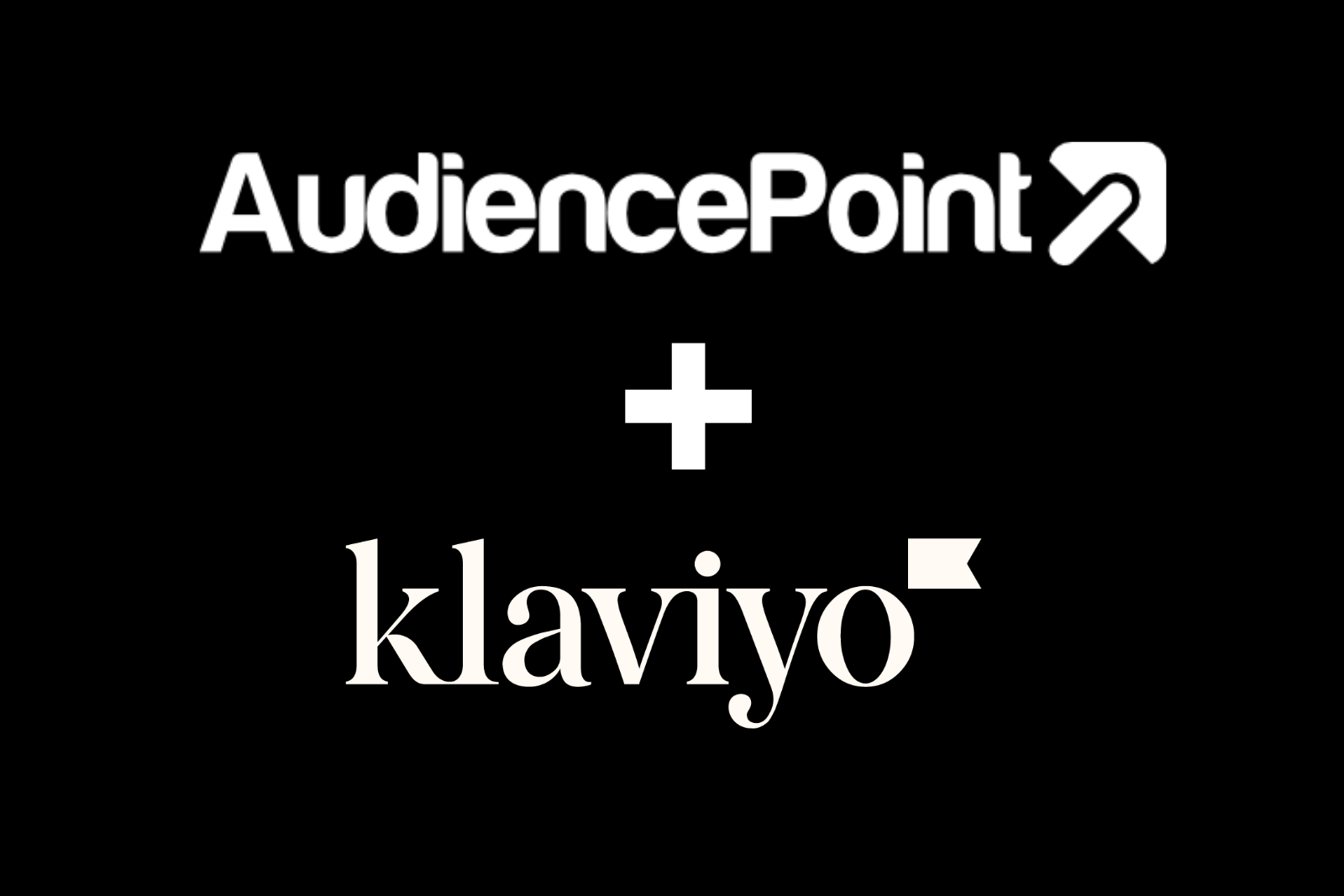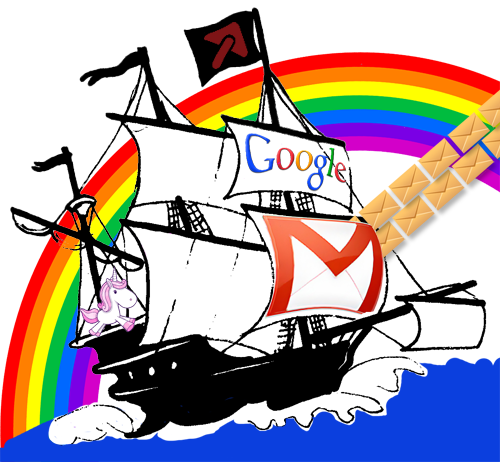AudiencePoint is thrilled to announce our new integration with Klaviyo! AudiencePoint is looking for partners to pilot our...
The average email deliverability rate dropped to 83.1% in 2024, while Internet Service Providers implement increasingly strict filtering. Email marketing managers are turning to artificial intelligence to break through the noise and rebuild engagement with selective audiences.
But AI email marketing extends far beyond content generation. The most successful implementations focus on subscriber behavior analysis, inbox placement optimization, and data-driven personalization that human teams cannot execute at scale. Understanding which AI applications deliver measurable ROI versus marketing hype becomes critical for marketing leaders evaluating these investments.
This guide examines practical AI strategies that enterprise email programs use to improve deliverability, re-engage dormant subscribers, and drive revenue growth. Let’s dive in!
What Is AI Email Marketing?
AI email marketing uses machine learning algorithms to analyze subscriber behavior patterns and optimize campaigns automatically. Rather than replacing human marketers, AI processes massive datasets to identify opportunities and execute tactical improvements impossible to manage manually.
The technology analyzes second-party data from billions of email interactions to understand how subscribers engage across different brands and campaign types. This cross-brand intelligence reveals engagement patterns that first-party data alone cannot uncover.
What Makes AI Email Marketing Different From Regular Automation?
To understand this distinction, consider how traditional automation operates versus AI-powered optimization. Traditional email automation follows predetermined rules based on subscriber actions. AI systems continuously learn from new data and adjust strategies without manual intervention.
The key difference lies in adaptability. Automation executes fixed workflows, but AI modifies its approach as subscriber behavior evolves. This becomes particularly valuable for enterprise email marketing AI implementations managing hundreds of thousands of subscribers.
How Does AI Email Marketing Actually Work?
The technical foundation of AI in email marketing relies on sophisticated data integration and machine learning processes. AI email marketing tools collect data from email engagement metrics, website behavior, purchase history, and external signals. Machine learning algorithms identify patterns to predict optimal send times, subject lines, and content preferences.
The system creates individual subscriber profiles that update continuously based on new interactions. Advanced platforms incorporate second-party data from other brands to understand broader subscriber behavior trends. Behind these sophisticated profiles are four distinct AI technologies, each serving a specific purpose. Let’s take a look.
The 4 Different Types of AI Used in Email Marketing
The following are the four technologies that work to create a comprehensive AI ecosystem that transforms basic email campaigns into intelligent, self-optimizing systems that adapt to subscriber behavior in real time:
1. Predictive Analytics
Predictive analytics forms the foundation by forecasting subscriber behavior, including engagement likelihood and churn probability. These models help prioritize high-value segments and identify re-engagement opportunities.
2. Natural Language Processing
Natural language processing builds on these predictions by analyzing email content performance and generating subject line variations. This technology examines which words and phrases drive higher open rates for specific subscriber segments.
3. Machine Learning Optimization
Machine learning optimization continuously tests campaign elements like send times, frequency, and content variations. Unlike traditional A/B testing, ML optimization evaluates thousands of combinations simultaneously.
4. Behavioral Clustering
Behavioral clustering groups subscribers based on engagement patterns rather than demographics. These dynamic segments update automatically as subscriber behavior changes, ensuring campaigns remain relevant.
Now that we understand how AI email marketing operates, the question becomes: why should this matter to your organization?
Why Should You Care About AI in Email Marketing?
There are numerous reasons to care about AI email marketing, not least of which is protecting your existing investment returns. Email marketing generates $36 for every dollar spent, but only when messages reach subscribers’ primary inboxes. AI helps maintain this ROI by solving four critical challenges that manual management cannot address at enterprise scale. Let’s examine each of these challenges and how AI addresses them. For enterprise email marketing AI implementations managing hundreds of thousands of subscribers, these challenges become exponentially more complex.
What Problems Does AI Email Marketing Solve?
Drawing from the AI technologies we just explored, here’s how they address the most pressing challenges facing enterprise email programs today.
The first major challenge is deliverability decline. One in six marketing emails fails to reach recipients’ inboxes, making email deliverability optimization essential for maintaining campaign effectiveness.
Beyond deliverability, subscriber fatigue becomes inevitable when email frequency misaligns with individual preferences. AI identifies optimal sending cadences for each subscriber, reducing unsubscribe rates while maintaining engagement.
As programs grow, segmentation complexity multiplies exponentially. AI creates dynamic segments based on subscriber behavior analysis patterns that human teams would never identify manually.
Finally, email re-engagement strategies become increasingly difficult as dormant subscribers require sophisticated approaches to avoid spam complaints. AI identifies specific triggers and content types that successfully reactivate different subscriber segments.
How Much Can AI Really Improve Your Email Performance?
Once you understand these core challenges, the natural question becomes: what kind of performance improvements can you actually expect?
The numbers demonstrate significant impact: Revenue increased by 41%, and CTR increased by 13.44% for marketers who utilize AI for email personalization. Automated emails generate 320% more revenue compared to non-automated emails, with 37% of email-generated revenue coming from automated emails.
AI-powered email re-engagement strategies can reactivate 10-15% of inactive subscribers compared to 2-3% success rates with traditional approaches.
What Are the Real Benefits vs. the Marketing Hype?
With impressive performance claims circulating, it’s worth separating genuine capabilities from vendor marketing promises.
Proven benefits include measurable improvements in inbox placement optimization, reduced manual optimization time, and better subscriber lifetime value. Automated emails have 52% higher open rates, 332% higher click rates, and 2361% higher conversion rates.
Marketing hype often oversells AI as a complete replacement for human creativity. Claims about fully automated campaigns requiring zero human oversight typically fail because they ignore brand voice consistency.
Should You Use AI To Write Your Email Content?
With all this focus on behavioral optimization and deliverability, the question many marketers ask is whether AI should also handle the creative work of writing email content itself. The answer is, it depends.
Weighing the Pros and Cons of Using AI to Write Your Email Marketing Campaigns
The decision to use AI for content creation involves weighing efficiency gains against potential risks to brand authenticity. Many benefits of using AI technology in email marketing have been explored thus far. We’ll touch on the advantages of using AI for the actual writing of your email campaigns, along with some disadvantages.
Pros of Using AI to Write Your Email Marketing Campaigns
AI writing advantages include rapid content production for large-scale campaigns, consistent messaging across variants, and the ability to test numerous subject line combinations simultaneously. AI can generate personalized content elements at scale that would be impossible to create manually.
Cons of Using AI to Write Your Email Marketing Campaigns
Compassion and warmth are often integrated into human writing. AI has much room for improvement in these areas. When using AI for email marketing campaigns, there is a risk that human connection could be lost in translation, resulting in an ineffective effort to engage the audience. Additionally, every brand has a distinct voice, tone, and target audience, and AI-generated content may not capture these nuances. There is also a risk of mistakes in AI-written content. AI doesn’t always deliver accurate information. Relying solely on AI for written content leaves the door wide open for potential mistakes. Factual, grammatical, and contextual errors can all be liabilities when depending on AI to generate email campaigns.
How Do You Balance AI Automation With Human Creativity?
The most successful approach involves strategic collaboration between AI efficiency and human insight. Strategic oversight ensures AI-generated content supports broader marketing objectives. Human marketers should establish content guidelines and quality standards that AI systems must meet. Creative direction provides the strategic thinking that AI cannot replicate. Humans should define campaign concepts and brand voice parameters that AI can then execute at scale. Performance monitoring tracks how AI-generated content performs compared to human-created alternatives, helping identify which content types benefit from AI automation versus human creation.
What Email Marketing Tasks Should Stay Human vs. AI?
Understanding which responsibilities to delegate to AI versus keeping under human control helps optimize both efficiency and quality outcomes.
Human-managed tasks include strategic campaign planning, brand voice development, creative concept creation, and complex customer journey mapping. These activities require strategic thinking and emotional intelligence.
AI-optimized tasks include send time optimization, subject line testing, content personalization at scale, email deliverability optimization, and subscriber scoring. These activities benefit from AI’s ability to process large datasets and identify patterns humans cannot detect manually.
Collaborative tasks combine human strategy with AI execution. Campaign concept development might involve human creative direction with AI-powered content variations and testing.
How Do You Use AI in Email Marketing Effectively?
Understanding AI’s potential is one thing, but practical implementation requires a strategic approach beyond simply adopting the latest AI email marketing tools.
How Do You Choose the Right AI Email Marketing Tools?
With many AI solutions entering the market, evaluation criteria become critical for making the right investment.
Data integration capabilities determine how effectively AI email marketing tools can access and analyze your subscriber information. Look for seamless integration with your existing email service provider and CRM.
Second-party data access provides email subscriber insights beyond your first-party data. Platforms with cross-brand engagement patterns can identify opportunities that internal data alone cannot reveal.
Email deliverability optimization focus ensures AI optimizations improve inbox placement optimization rather than just engagement metrics. Tools prioritizing sender reputation deliver more sustainable results.
What Should You Implement First When Starting With AI?
Rather than transforming your entire program overnight, smart implementation follows a priority sequence that builds confidence while delivering quick wins.
Send time optimization delivers quick wins with minimal risk. AI analysis of email subscriber insights can improve open rates by 15-25% without requiring content changes.
Building on that foundation, email deliverability optimization provides immediate value by identifying reputation issues before they impact performance. AI-powered platforms can detect problems weeks earlier than traditional monitoring.
List health analysis helps identify re-engagement opportunities and potential spam trap addresses before implementing more advanced features.
Subscriber scoring creates engagement predictions that inform campaign prioritization, helping focus resources on high-value subscribers.
Once you’ve identified starting priorities, the challenge becomes fitting AI capabilities into your current infrastructure without disrupting ongoing campaigns.
How Do You Integrate AI With Your Existing Email Marketing Stack?
API connections allow AI platforms to access subscriber data and push optimization recommendations back to your email service provider, maintaining existing workflows while adding intelligence layers.
Data enrichment enables AI tools to append behavioral insights to existing subscriber records that marketing teams can use within familiar interfaces.
Parallel implementation runs AI optimization alongside existing campaigns to validate performance improvements before full deployment.
With implementation fundamentals covered, let’s examine the specific AI applications that consistently deliver results.
What AI Email Marketing Strategies Actually Work?
The most successful AI email marketing implementations focus on subscriber behavior analysis and email deliverability optimization rather than trying to automate entire campaign creation processes.
How Do You Use AI for Better Email Deliverability?
Since email deliverability optimization forms the foundation of everything else, none of the other optimizations matter if your emails don’t reach the inbox. Let’s start with how AI can protect and improve your inbox placement optimization rates.
Reputation monitoring tracks sender score changes across major ISPs and identifies specific factors causing deliverability problems. AI systems correlate content elements, sending patterns, and subscriber engagement to pinpoint reputation risks.
Content optimization analyzes which subject lines and email content elements improve inbox placement optimization rates, focusing on ISP filtering algorithms rather than just open rates.
Sending pattern intelligence identifies optimal frequencies and timing patterns that maintain positive sender reputation, detecting when increased frequency starts impacting deliverability.
List hygiene automation continuously identifies problematic email addresses, including spam traps and chronic non-engagers that damage sender reputation.
What Is AI-Powered Send Time Optimization?
Building on deliverability fundamentals, send time optimization represents one of the most immediately impactful AI applications.
Send time optimization analyzes individual subscriber engagement patterns to predict when each person is most likely to open emails. Unlike basic time zone adjustments, this approach considers personal behavior patterns, device preferences, and engagement history.
The technology tracks when subscribers typically check email and which days generate the strongest response, enabling sending campaigns at optimal times for each subscriber rather than using broad demographic assumptions.
How Can AI Help You Re-Engage Dormant Subscribers?
While timing optimization helps maintain existing engagement, many enterprise programs face the challenge of reactivating subscribers who have already gone dormant.
Predictive churn modeling identifies subscribers likely to become inactive before they completely disengage. Early intervention campaigns can prevent churn more effectively than trying to reactivate completely dormant subscribers.
Personalized win-back content analyzes which offers and messaging approaches successfully re-engage different subscriber segments. AI identifies patterns in successful email re-engagement strategies and applies these insights automatically.
Optimal re-engagement timing determines the best intervals for win-back campaigns based on inactivity duration and historical patterns, preventing over-mailing while maximizing reactivation opportunities.
How Do You Use AI for Advanced Email Segmentation?
Beyond individual subscriber optimization, AI transforms how you group and target different subscriber populations based on sophisticated behavioral patterns.
Behavioral clustering groups subscribers based on engagement patterns and content preferences rather than demographics. These dynamic segments update automatically as subscriber behavior analysis reveals changing preferences.
Propensity scoring predicts which subscribers are most likely to convert or engage with specific campaign types, enabling more precise targeting and resource allocation.
Cross-campaign intelligence analyzes how subscribers engage across multiple campaigns to create comprehensive engagement profiles that improve segmentation accuracy.
How Do You Measure Success With AI Email Marketing?
After implementing these AI strategies, measuring their impact becomes crucial for justifying investments and optimizing performance over time.
What Metrics Matter Most for AI Email Marketing?
Foundation metrics focus on email deliverability optimization. Track inbox placement optimization rates, spam folder placement, and sender reputation scores to ensure AI optimizations improve rather than harm email deliverability.
Engagement quality goes beyond basic open and click rates to measure meaningful subscriber interactions. Monitor time spent reading emails, forward rates, and conversion quality to assess whether AI personalization creates genuine value.
Revenue attribution connects AI optimizations to business outcomes through email-attributed sales and customer lifetime value improvements. These metrics justify AI investments and guide future optimization priorities.
How Long Does It Take To See Results From AI Implementation?
Understanding realistic timelines helps set appropriate expectations for stakeholders.
Immediate Improvements in send time optimization and basic personalization can appear within 2-4 weeks. These quick wins help build confidence while more sophisticated features continue learning from email subscriber insights.
Significant performance gains typically emerge after 3-6 months as AI systems accumulate sufficient data to identify meaningful behavior patterns. Email deliverability optimization benefits usually become apparent during this timeframe.
Mature AI performance develops after 6-12 months when systems have analyzed multiple campaign cycles. The most substantial revenue impacts typically emerge during this phase.
How Do You Calculate ROI on AI Email Marketing Tools?
With timeline expectations established, the final piece involves building a framework for measuring financial returns on AI investments.
Direct revenue impact measures incremental email-attributed sales generated through AI optimization. Compare email revenue performance before and after implementation, adjusting for external factors.
Cost savings include reduced manual optimization time and improved campaign efficiency. Calculate the monetary value of time savings and operational improvements enabled by AI automation.
Deliverability protection quantifies the value of maintaining inbox placement optimization rates that might otherwise decline. Nearly 88% of senders could not correctly define what the email delivery rate metric measures, highlighting the importance of AI-powered monitoring.
Leading enterprise email marketing AI programs report AI ROI ranging from 300-800% within the first year, with returns typically increasing in year two as systems mature.
Ready To Enhance Your AI Email Marketing Strategy?
As we’ve explored throughout this guide, the foundation of successful AI email marketing isn’t just about automation—it’s about the quality of subscriber behavior analysis and email deliverability optimization that drives real results. While AI content tools are everywhere, the platforms that deliver measurable ROI focus on inbox placement optimization and cross-brand intelligence that first-party data simply cannot provide. Contact AudiencePoint today, and discover how our insights from 2 billion email addresses and 85 trillion tracked events can transform your email performance and deliverability.





